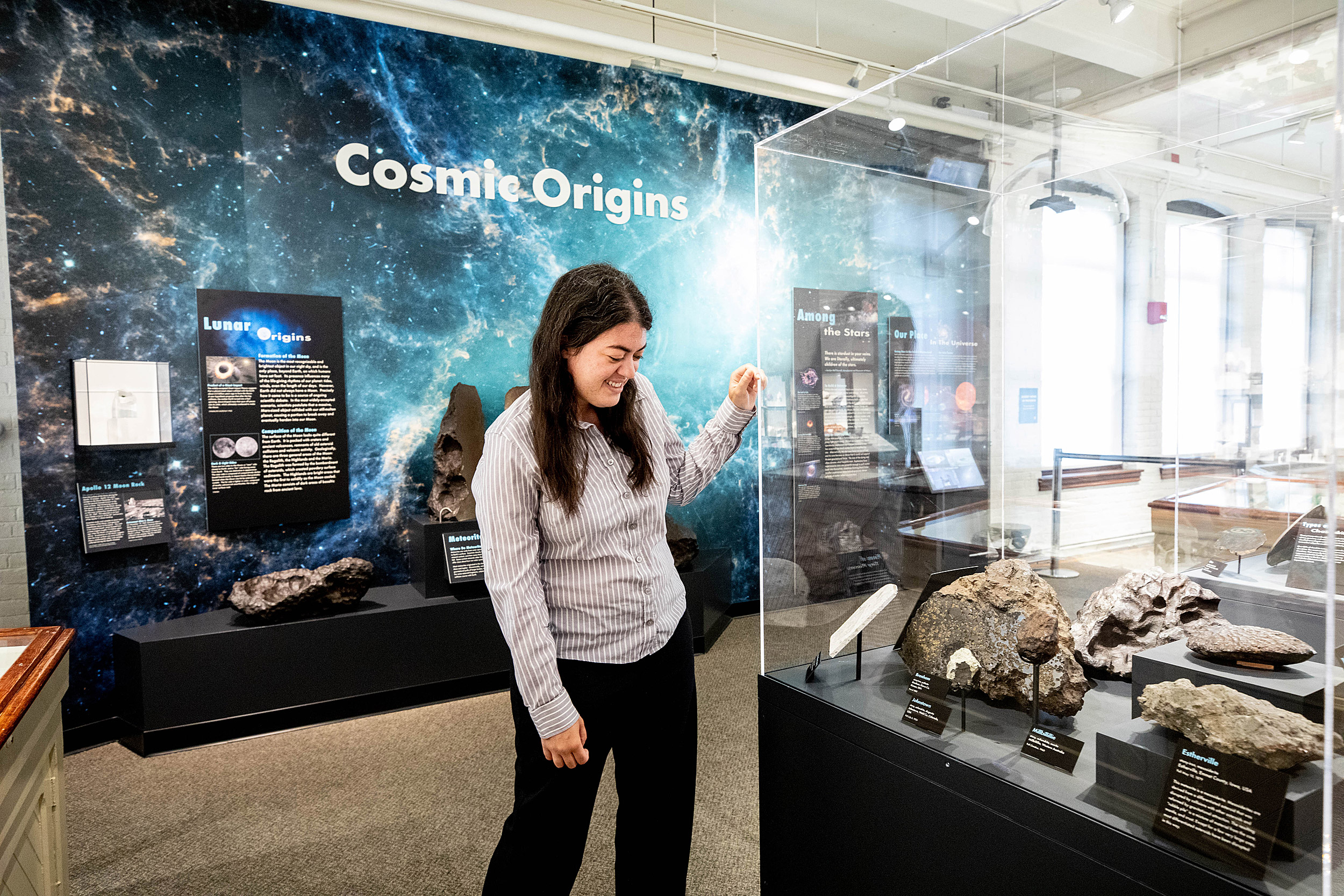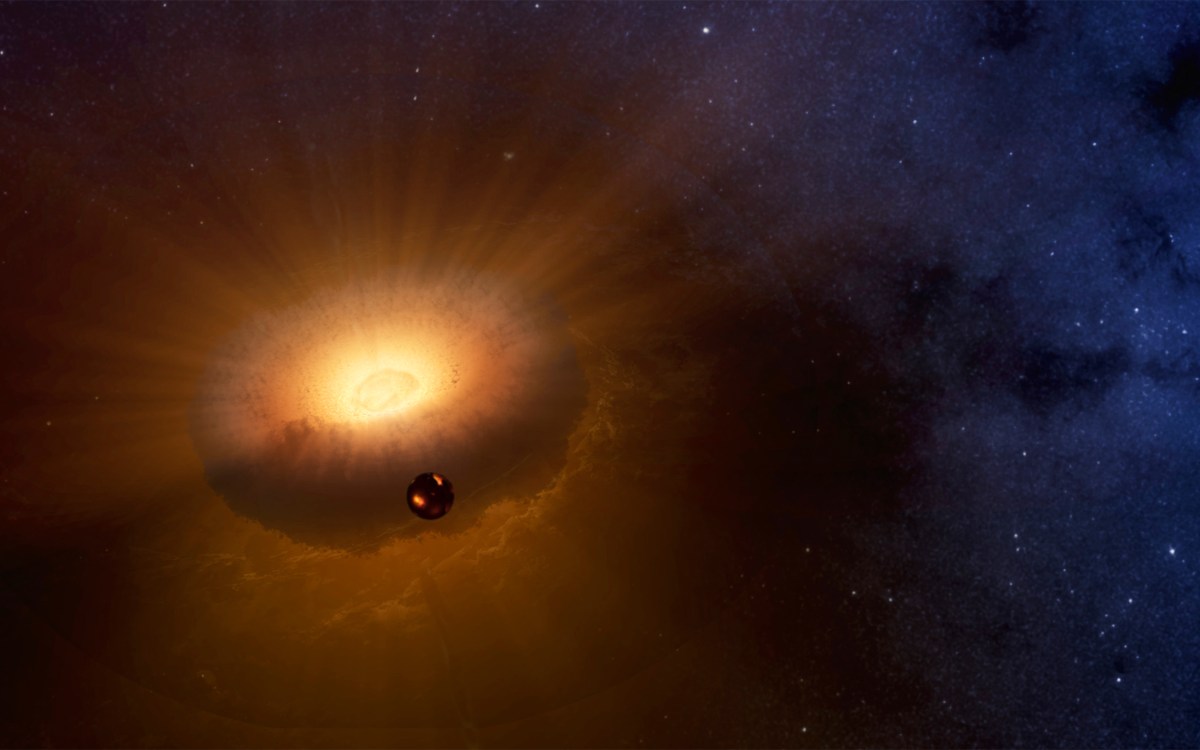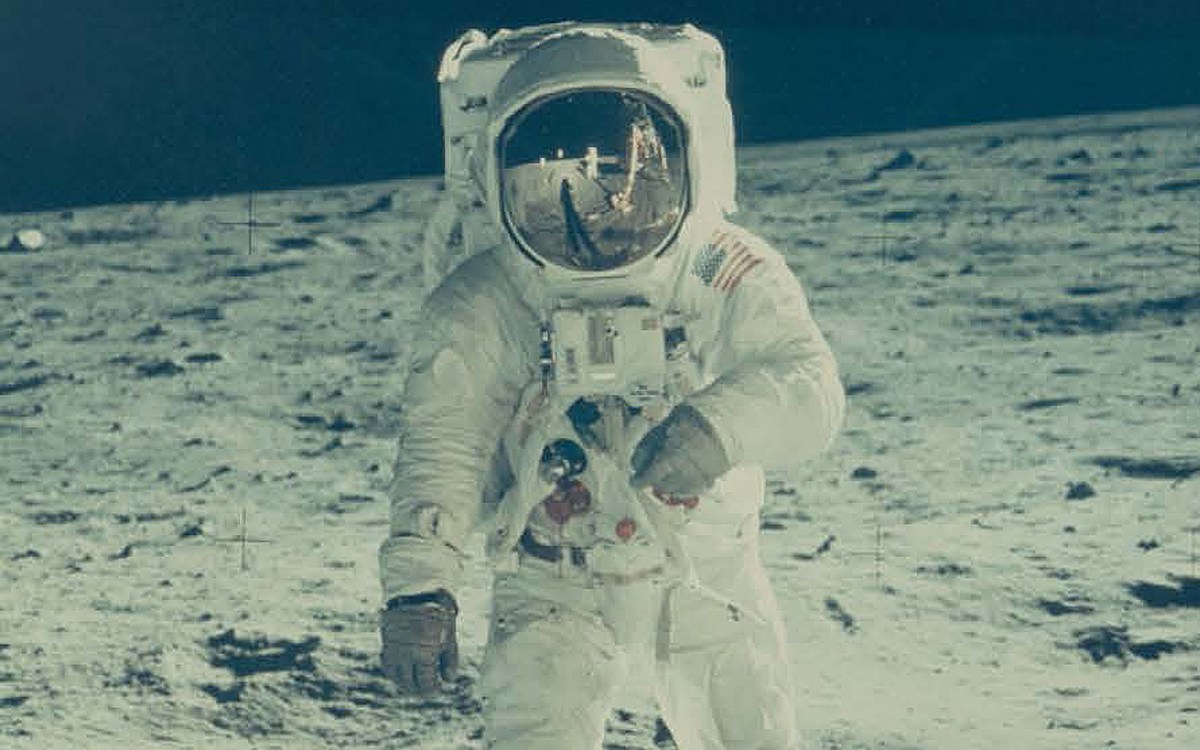
Rebecca A. Fischer, Clare Boothe Luce Assistant Professor in the Department of Earth and Planetary Sciences, curated the “Cosmic Origins” display which features a lunar rock on display at the Harvard Museum of Natural History.
Photos by Rose Lincoln/Harvard Staff Photographer
The first moon walk
Natural history museum displays the relics, examines the legacy of space exploration, moon walk
Fifty years ago, American astronauts landed on the surface of the moon, inspiring a new wave of scientific research and discovery about the cosmos. Now, the Harvard Museum of Natural History is displaying parts of that history in a new mini-exhibit looking at what scientists have learned about the beginnings and workings of the known universe.
“Cosmic Origins,” opens Saturday, the 50th anniversary of Apollo 11’s lunar landing, and includes a portion of a moon rock collected during NASA’s Apollo 12 mission.
“In the 50 years since we first set foot on the moon, humanity’s understanding of the origins and evolution not only of our planet and solar system, but also of the vast wider universe, has grown astronomically,” said Janis Sacco, director of exhibitions at the Harvard Museums of Science & Culture. “‘Cosmic Origins’ represents a sampling of this growing body of knowledge, assembled with the help of Harvard faculty and researchers in the departments of Earth and Planetary Sciences and Astronomy.
“From my perspective, what is most exciting about the science in ‘Cosmic Origins’ is what it reveals about common origins and the nature of all that we know in the universe,” she said. “Everything we can see and touch, the processes that shape worlds, even life itself, all arise from the activities of stars. For me, it is a wondrous thing that we are all connected to the larger cosmos in this way.”
A display of a portion of a lunar rock collected from the surface of the moon during the Apollo 12 mission.

Along with the moon rock, visitors can touch iron meteorites from the collections of the Harvard Mineralogical and Geological Museum and see a wall-sized mural of the Crab Nebula, a supernova remnant 6,500 light years away. A media station explores 3D models of the universe, theories about the creation of moons, the nature of asteroids and meteorites, and famous Italian astronomer Galileo Galilei’s observations of Jupiter’s moons.
The presentation is located within the Earth & Planetary Sciences exhibit and is on view through Nov. 27. A special event, “Lunar Soirée,” celebrating the 1969 moon landing takes place the same day as the opening. Admission is $20 for members and $25 for nonmembers. The event is 21-plus.
“Cosmic Origins” is on display at the Harvard Museum of Natural History, 26 Oxford St., on the Harvard campus. The museum is open 9 a.m. to 5 p.m. daily. Plan your visit or call 617.495.3045 for admission prices.
The mini-exhibit is presented in memory of the late John Huchra, vice provost for research policy at Harvard University and a professor of astronomy at the Harvard-Smithsonian Center for Astrophysics,through the generosity of Rebecca Henderson, Ph.D. ’88, John and Natty McArthur University Professor at Harvard Business School.






